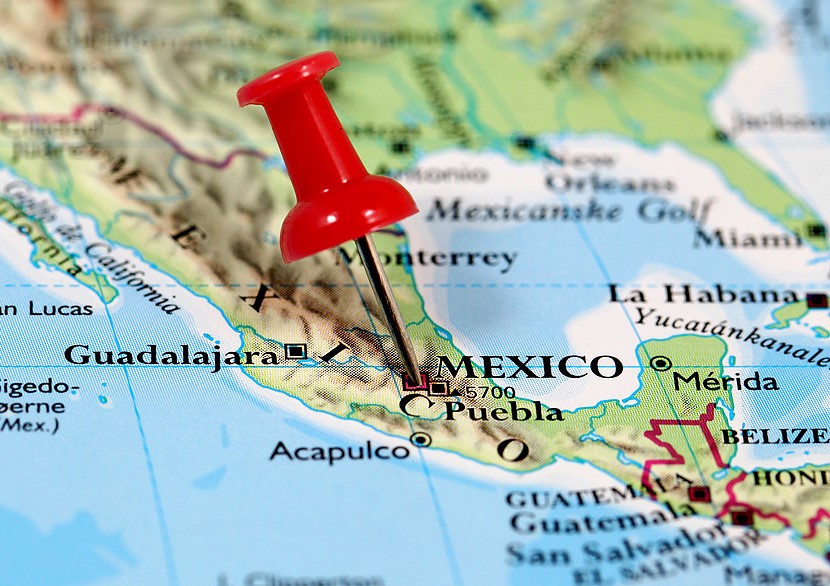News
Water Crisis: Mexico City Facing Day Zero Threat
Back in 2018, Cape Town hit global headlines for being the first city in the world to approach Day Zero, the day in which it would run out of water, with the crisis driven by increasing demand and inadequate supply.
While the situation was ultimately avoided, the threats still remain – and it’s no longer just Cape Town that’s at increased risk of demand outstripping supply, thanks to population growth, urbanisation, pollution, water mismanagement and climate change.
Mexico City, for example, is now facing a very similar existential threat, with severe water shortages in the region meaning that large parts of the metropolis could run out of water in just a few short months.
Drying up
As prolonged drought conditions rock the country, local dams that supply water are now only 30 per cent full, according to Mexican news outlet Excelsior (via Semafor). And the National Water Commission has estimated that the region could run out of water by August 26th if these dams aren’t replenished or if water usage isn’t slashed dramatically.
Although December 2023 did see above average rainfall for the time of year, levels were still insufficient to alleviate the pressure being put on the country by the drought.
Figures from Mexico’s National Meteorological Service show that 55 per cent of the country was affected by drought in December, with areas ranked from severe to exceptional climbing in the north-west, the west, the north Pacific and the middle of the country, Mexico News Daily reported at the start of the year.
Further analysis suggests that 2023 was in fact the driest year the countryside had seen since 1957, resulting in dried-up reservoirs, crop failures and livestock fatalities.
It’s not just the drought that’s causing issues, however, and the country is also under pressure because of rising temperatures, increasing urban sprawl and leaking infrastructure, making it even harder for the dwindling water supplies to meet the needs of the 22 million people or thereabouts who call Mexico City home.
The very location of the city is also somewhat problematic, built on a high-altitude lake bed of clay soil approximately 7,300 feet above sea level. Not only is the region at serious risk of earthquakes, it’s also particularly vulnerable to the effects of climate change… and it’s starting to sink into the soil on which it was built.
First established in the 14th century by the Aztecs (then known as the city of Tenochtitlan), the region was initially a series of lakes before it was expanded and connected via an extensive network of bridges and canals.
But upon the arrival of the Spanish in the 16th century, everything changed, with the lakebed drained, the canals filled in and the forests destroyed.
This, it seems, is in large part to blame for the many problems present-day Mexico City is now facing, with concrete and tarmac now in pride of place over rivers, canals and wetlands. The end result has been that flooding becomes a serious cause for concern during the monsoon season and that drought takes hold during the hotter months of the year.
Add to this the fact that Mexico City has been sinking into the ground at a rate of approximately 20 inches a year thanks to over-abstraction of underground aquifers, and it’s perhaps fair to say that the region is now in the grips of a very real existential crisis.
What’s being done to prevent Day Zero?
In a bid to prevent Day Zero and shore up water supplies, a range of different solutions are now being considered, including tightening restrictions to reduce how much water is supplied, improving wastewater treatment to drive up water availability and reduce pollution, and making use of rainwater harvesting systems.
Focusing on water leak detection and repair can also make a significant difference, while restoring rivers and wetlands would help to cool the city, create more green spaces and provide valuable water sources for future generations.
This isn’t the first time that Mexico City has been faced with water supply issues. Back in 2018, an entire week passed by where no water was available from the municipal supply source, with city wells and reserves in water tanks and pipes the only usable sources for people to turn to.
With climate change and population growth only promising to exacerbate the situation, a Water Fund was set up for the megacity, with the aim being to ensure that it’s fully prepared to meet the water-related challenges that are sure to present themselves in the future.
This strategy will help to address overexploitation of aquifers, promote more efficient use of water, push forward with new and innovative nature-based solutions, increase smart infrastructure uptake to protect groundwater recharge zones and drive investment for wastewater treatment and reuse.
All these measures and more besides will likely be necessary to ensure that Mexico City remains resilient – particularly important now when you consider that the rainy season is still a few months away, so there’s little in the form of respite on the very near horizon right now.
As water management consultant Jose Antonio Rodriguez Tirado explained to Forbes Mexico: “We have to consider that Day Zero is now, because the rivers are contaminated, the springs are overexploited… this is what we must understand.”
With the monsoon season still relatively far off, it seems that it is now essential for the region to find new ways to manage water and keep Day Zero at bay… if that is indeed possible to do.
